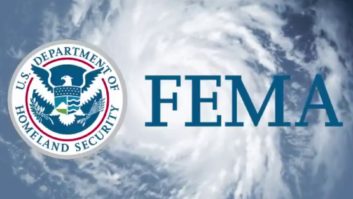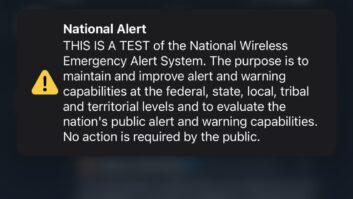In one sense, the national EAS test on Nov. 9 is already successful.
“On the EAN test front, we’re getting phone calls and emails from people who haven’t taken a close look at their EAS system in years,” Sage Alerting Systems President Harold Price told Radio World. His company makes a popular EAS coder/decoder. “So from the standpoint of increasing awareness in the broadcast community, the test is already a success before it is even run.”
Clay Freinwald, who has long been involved with EAS matters, sounded a similar note; he’s quoted in a blog post by Radio World’s Paul McLane as saying, “It appears that many [people] are, perhaps for the first time, starting to really think about EAS and what this national test might reveal about their previous attitude and/or efforts regarding compliance.”
RW asked Harold Price of Sage to list the questions and concerns he’s hearing from stations since the test handbook was posted this week.
Broadcasters, Price said, are seeking to make sure their hardware and software are configured properly, including filter settings, and that their audio levels are set correctly. (Sage, like other manufacturers, has prepared documents to help users with those questions.)
Another topic is reconfiguration of monitor sources to make sure the Emergency Alert Notification is heard in areas where there is no coverage.
“The community seems to be split into the ‘let it fail and document it’ camp and the ‘make it work’ camp,” he said in an email conversation. “I lean toward the make-it-work camp, as long as it doesn’t rely on a one-time-only fix. Any changes that use permanent resources should simply become part of the state plan going forward.”
Price continued, “If a local area knows there is a hole, and can fix it with local resources that are permanent, then that change should be made now. FEMA and the FCC don’t have the resources to find or fix every coverage hole for every local area. Only the locals really know what works and what doesn’t. They need to step up and fix the problem locally, (and they are) making the appropriate changes in the state plan. Obviously, FEMA does need to continue its work on expanding the coverage of PEP stations, and they are.”
Sage is also hearing confusion about whether or not particular state relay networks will carry the EAN, and whether or not the LP1 in an area has any other way to get the EAN. “Hopefully, states are taking steps to get the EAN to as many stations as possible, and if they are using special resources for this test, they will make those resources a permanent part of the state plan.”
Some broadcasters apparently aren’t clear on the role CAP plays in the Nov. 9 test. The short answer is none; this test focuses on “legacy” EAS.
“Everyone is getting a little frazzled as we get down to test day,” Price concluded. “Contract engineering resources are stretched thin checking on status; large corporate groups are having all-hands conference calls; no one wants to look bad.”
He expects the test will produce good information on actual coverage from the PEP network. “I think the increase in overall awareness of the actual connectivity in the legacy network is already leading to improvements. Sage has received ideas for improvement and new features as a result of this, and I’m sure we’ll learn more starting at 2:05 p.m Nov. 9.”
Radio World is interested in your experiences with the test, in how you are preparing for it and your observations about the resources provided by federal officials at FEMA and the FCC. Share thoughts by emailing to [email protected].










